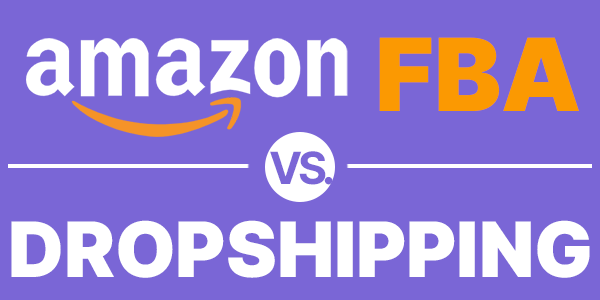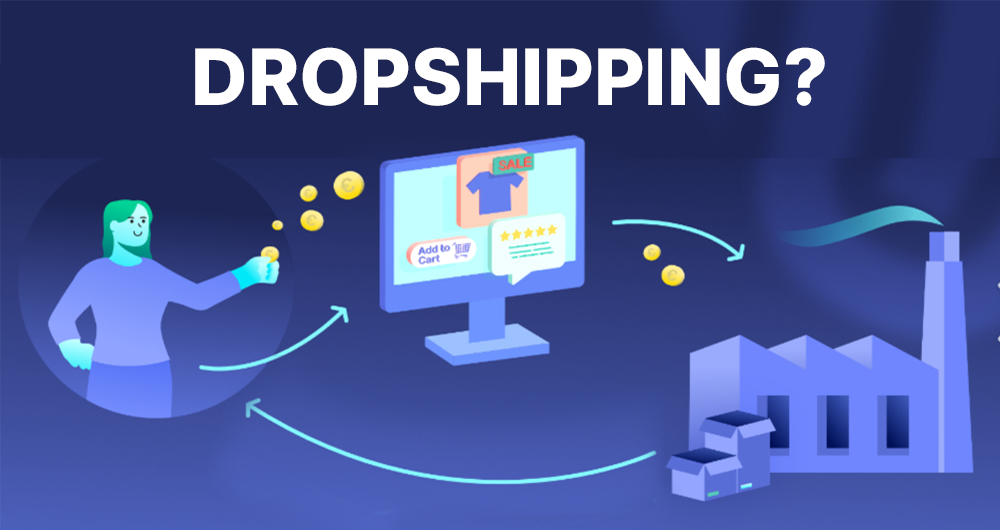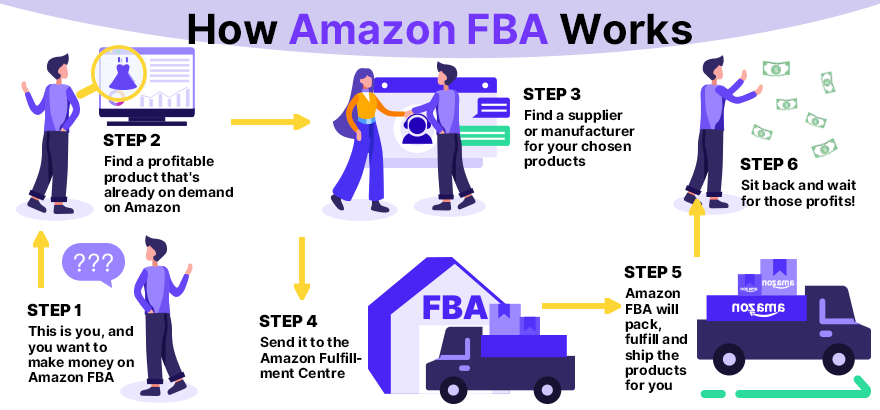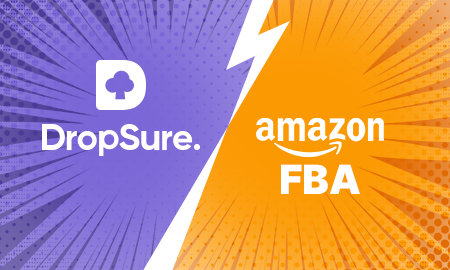Are you considering entering the world of eCommerce but unsure whether to choose Dropshipping or Amazon FBA? These are two of the most popular and successful fulfillment options available. The question is, which one is better suited for your business?

In this article, we will break down the key differences between these two methods, comparing their pros and cons to help you make an informed decision. Whether you’re looking for low-risk startup solutions or more automation, this guide will provide valuable insights for growing your online business.
What is Dropshipping?

Dropshipping is a business model where you don’t hold any inventory. As a seller, you list products in your store, and when a customer places an order, the supplier ships the product directly to them. For those looking to start selling with minimal costs and lower risks, dropshipping is a great choice. You don’t need a warehouse or worry about logistics. You only pay after a sale is made. However, dropshipping requires careful management of suppliers and effective marketing to bring traffic to your store.
What is Amazon FBA?

Amazon FBA (Fulfillment by Amazon) is a service that allows you to send your products to Amazon’s warehouse, and they handle storage, packing, and shipping when an order is placed. You won’t need to manage packaging or logistics, as Amazon will also take care of returns and customer service. Commonly, you can say it is an automated dropshipping Amazon service.
FBA is ideal for sellers who want to leverage Amazon’s vast customer base and logistics network. Products become eligible for Amazon Prime shipping (Amazon Dropshipping), attracting more buyers. However, FBA requires upfront inventory investment and fees for storage, shipping, and fulfillment.
Dropshipping vs. Amazon FBA: Key Differences

To make it easier for you to understand, We’ve prepared a comparison table that highlights the key differences and similarities between Dropshipping and Amazon FBA.
Here’s a table you can learn about Amazon FBA vs Dropshipping. We hope this will help you decide which option is better suited for your business.
| Feature | Amazon FBA | Dropshipping |
| Upfront Investment | ❌ High startup cost, inventory needed | ✔ No upfront investment, pay as you go |
| Inventory Management | ❌ Requires pre-purchased inventory | ✔ No inventory needed, ship as you sell |
| Order Fulfillment | ✔ Amazon handles fulfillment | ❌ Manual handling, but can use automation |
| Advertising | ✔ Built-in Amazon advertising | ✔ Flexible, use any platform (e.g., Meta ads) |
| Profit Margins | ✔ Discounts for bulk orders, but high fees | ❌ Higher product costs but no fees |
| Customer Contact | ❌ No direct contact with customers | ✔ Full control over customer interaction |
| Customer Base | ✔ Access to Amazon’s customer base | ❌ Need to find your own customers |
| Control | ❌ Limited control, Amazon handles everything | ✔ Full control over your business |
| Scalability | ❌ High costs to scale, limited flexibility | ✔ Easy to scale, especially for new businesses |
| Risk | ❌ High risk with inventory investment | ✔ Low risk, no inventory holding |
While both Dropshipping and Amazon FBA are effective ways to sell products online, they each have their own unique advantages and challenges.
Choosing between Dropshipping and Amazon FBA depends on your business goals. If you’re just starting out and want low-cost, low-risk options, Dropshipping is a flexible choice. It offers no upfront investment and more freedom to scale. If you have the budget and want to leverage Amazon’s strong infrastructure, Amazon FBA might be the better option. Both methods provide great opportunities for building a successful eCommerce business—so choose the one that best fits your needs.
If you prefer automation and don’t want to handle inventory, Dropsure could be your best choice. (Want to learn more about Dropsure’s platform and features? Please read What is Dropsure for more details.) It combines the flexibility of dropshipping with the automation benefits of FBA, offering a low-risk, no-inventory solution.




 4 min read
4 min read


